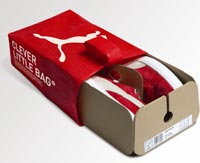 Outstanding
performances of PUMA athletes and teams have strongly influenced international
sports through innovative PUMA products and creative marketing initiatives for
more than 60 years. Milestones in PUMA’s sports history were the
development of the first football boot with screwin studs in 1952 by the
company’s founder Rudolf Dassler, the legendary “two-stripe”
jersey of Johan Cruyff at the world championship in 1974, the PUMA contact
lenses of Linford Christie in 1996, the skin-tight Catsuit tennis dress of
Serena Williams at the US Open 2002, the revolutionary one-piece Cameroon
football shirt in 2004, the Italian national team winning the Football World
Cup in 2006, Ferrari with its seven-times world champion, most successful
Formula 1 pilot and PUMA partner Michael Schumacher, who dominated the sports
for years, the world records of sprint hero Usain Bolt as well as the Volvo
Ocean Race, “the Everest of Sailing” that PUMA’s eye-catching
sailing yacht il mostro finished in second place in 2009.Through creativity and
innovative products PUMA has always set standards in sports and style.
Partnerships with federations such as Jamaica, Italy and in Africa provided the
brand with the opportunity to lead the way in creative and innovative global
sports marketing. PUMA was not only able to strengthen its positioning as a
sportlifestyle brand, but created a whole new market by establishing the
segment sportlifestyle. Outstanding
performances of PUMA athletes and teams have strongly influenced international
sports through innovative PUMA products and creative marketing initiatives for
more than 60 years. Milestones in PUMA’s sports history were the
development of the first football boot with screwin studs in 1952 by the
company’s founder Rudolf Dassler, the legendary “two-stripe”
jersey of Johan Cruyff at the world championship in 1974, the PUMA contact
lenses of Linford Christie in 1996, the skin-tight Catsuit tennis dress of
Serena Williams at the US Open 2002, the revolutionary one-piece Cameroon
football shirt in 2004, the Italian national team winning the Football World
Cup in 2006, Ferrari with its seven-times world champion, most successful
Formula 1 pilot and PUMA partner Michael Schumacher, who dominated the sports
for years, the world records of sprint hero Usain Bolt as well as the Volvo
Ocean Race, “the Everest of Sailing” that PUMA’s eye-catching
sailing yacht il mostro finished in second place in 2009.Through creativity and
innovative products PUMA has always set standards in sports and style.
Partnerships with federations such as Jamaica, Italy and in Africa provided the
brand with the opportunity to lead the way in creative and innovative global
sports marketing. PUMA was not only able to strengthen its positioning as a
sportlifestyle brand, but created a whole new market by establishing the
segment sportlifestyle.
 Football
As early as in 1952, PUMA set the first milestone on the pitch by developing
the “Super Atom”, the first mass-produced football boot with
screw-in studs. Eight players of German premier league club Hannover 96 sported
the new mass-produced boots during the final of the German Premier League
Championship in May 1954 and heralded a new era of football boot development -
well before Germany’s famous World Cup win in Bern in July that year. A
story to remember is the legendary “Two-Stripe Jersey” that the
captain of the Dutch national team Johan Cruyff created at the World Cup 1974.
The Dutch player refused to play in a threestripe shirt because he felt closely
connected to his sponsor PUMA. He created a unique Dutch two-stripe jersey
which debuted in the final of the World Cup in Munich. Football
As early as in 1952, PUMA set the first milestone on the pitch by developing
the “Super Atom”, the first mass-produced football boot with
screw-in studs. Eight players of German premier league club Hannover 96 sported
the new mass-produced boots during the final of the German Premier League
Championship in May 1954 and heralded a new era of football boot development -
well before Germany’s famous World Cup win in Bern in July that year. A
story to remember is the legendary “Two-Stripe Jersey” that the
captain of the Dutch national team Johan Cruyff created at the World Cup 1974.
The Dutch player refused to play in a threestripe shirt because he felt closely
connected to his sponsor PUMA. He created a unique Dutch two-stripe jersey
which debuted in the final of the World Cup in Munich.
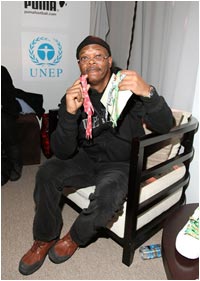 When
Jochen Zeitz took the helm in 1993, he launched a new brand strategy which
turned PUMA into the most desirable sportlifestyle brand through successfully
fusing influences from sports, lifestyle and fashion. The epitome of the new
sportlifestyle segment was PUMA’s cooperation with designer Jil Sander in
1998 when PUMA combined - as the first sports brand ever - sports and style.
The newly introduced trend found its way onto the international catwalks and
especially onto the football pitches where PUMA set new standards for sports
fashion and established the sportlifestyle segment. When
Jochen Zeitz took the helm in 1993, he launched a new brand strategy which
turned PUMA into the most desirable sportlifestyle brand through successfully
fusing influences from sports, lifestyle and fashion. The epitome of the new
sportlifestyle segment was PUMA’s cooperation with designer Jil Sander in
1998 when PUMA combined - as the first sports brand ever - sports and style.
The newly introduced trend found its way onto the international catwalks and
especially onto the football pitches where PUMA set new standards for sports
fashion and established the sportlifestyle segment.
Legendary examples of PUMA’s sports fashion were the coloured football
boots at the World Cup in France in 1998 and the sleeveless jerseys, sported by
the Cameroon national team at the African Cup of Nations and the World Cup in
2002. The football fashion was further revolutionized, when the Cameroon team
played in one-piece jerseys for the first time ever at the African Cup of
Nations in 2004. The one-piece kits caused a worldwide media stir and the
international football federation FIFA sued PUMA, trying to ban the sensational
jerseys. PUMA’s successful fusion of sports and style within the realm of
football was crowned when the Italian national team won the World Cup in 2006:
The “Squadra Azzurra” represents the perfect combination of
athletic world class and fashionable flair, further extending PUMA’s
position as one of the three leading football brands.
 As
the partner of 13 African football federations, PUMA has not only been the
leading sponsor in Africa for many years, but has also used the continent to
launch its most innovative products. The joy of the game, aesthetics, passion
and culture are African values that PUMA also stands for. The World Cup offers
a unique platform for PUMA to demonstrate its long-term commitment to African
football and the continent. While Africa has been carrying the stigma of
conflicts and poverty in the global press, PUMA has always emphasized the
positives of the prospects and uniqueness of the continent. As
the partner of 13 African football federations, PUMA has not only been the
leading sponsor in Africa for many years, but has also used the continent to
launch its most innovative products. The joy of the game, aesthetics, passion
and culture are African values that PUMA also stands for. The World Cup offers
a unique platform for PUMA to demonstrate its long-term commitment to African
football and the continent. While Africa has been carrying the stigma of
conflicts and poverty in the global press, PUMA has always emphasized the
positives of the prospects and uniqueness of the continent.
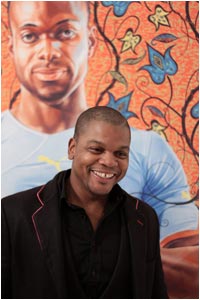 In
January 2010, PUMA entered into a partnership with the Environment Programme of
the United Nations (UNEP) to protect biodiversity. The joint ‘Play for
Life’ campaign was launched to support projects in Africa and elsewhere.
To fund this initiative, PUMA launched the Africa Unity Kit, the world’s
first ‘continental football kit’ designed to be worn by the 13
African football national teams that PUMA sponsors. In
January 2010, PUMA entered into a partnership with the Environment Programme of
the United Nations (UNEP) to protect biodiversity. The joint ‘Play for
Life’ campaign was launched to support projects in Africa and elsewhere.
To fund this initiative, PUMA launched the Africa Unity Kit, the world’s
first ‘continental football kit’ designed to be worn by the 13
African football national teams that PUMA sponsors.
Running
PUMA has always been successful in finding the right partners, who perfectly
reflect and convey the image of the brand around the world. Sprint superstar
Usain Bolt and the Jamaican track and field team perfectly embody that sports,
fun and style have always been key elements in PUMA’s brand strategy. At
the Olympic Games 2008 in Beijing, Usain Bolt set a 100m world record of 9.69
seconds, smashing his own mark from May that year and sprinted 200m in the
world record time of 19.30 seconds, beating Michael Johnson’s 1996 record
by two hundredths of a second. He won his third gold medal as Jamaica shattered
the world record in the 4x100m relay in 37.10 seconds.
 In
close collaboration with Usain Bolt, PUMA developed the Theseus II, the
ultimate running shoe. Running both the 100m and 200m, the Jamaican sprinter
needed a versatile shoe that provided support for power, as well as firmness to
hold his foot in place around the turn. PUMA produced a gold version of the
shoe for Beijing, which helped power him through the greatest sprints of his
life so far. In
close collaboration with Usain Bolt, PUMA developed the Theseus II, the
ultimate running shoe. Running both the 100m and 200m, the Jamaican sprinter
needed a versatile shoe that provided support for power, as well as firmness to
hold his foot in place around the turn. PUMA produced a gold version of the
shoe for Beijing, which helped power him through the greatest sprints of his
life so far.
At the World Athletics Championships 2009 in Berlin, Usain Bolt wrote sports
history again when he smashed the 100m and 200m world records. The PUMA Yaam
sprint spike that propelled him to victory was developed by a team of PUMA
designers and technicians who studied and measured Bolt’s stride and foot
form. The vibrant orange sprint spike, designed to contrast the Olympic
Stadium’s signature blue track and Usain’s way of achieving
outstanding performances, mixing sport and style, caused a global stir.
Sailing
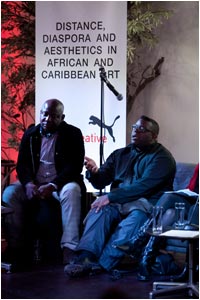 At sea, PUMA participated with an own boat in one of the world’s toughest
sailing races, the Volvo Ocean Race in 2008. As the first multi-category
company, PUMA entered into sailing and combined high performance sports with
cutting-edge technology, styling and adventure. The 11-men strong crew –
the PUMA Ocean Racing Team – raced 10 legs and visited 10 countries in
Africa, Asia, South and North America. During nine months, they covered 37,000
nautical miles (68,524 km) before finishing the race in second place in June
2009 in St. Petersburg.
At sea, PUMA participated with an own boat in one of the world’s toughest
sailing races, the Volvo Ocean Race in 2008. As the first multi-category
company, PUMA entered into sailing and combined high performance sports with
cutting-edge technology, styling and adventure. The 11-men strong crew –
the PUMA Ocean Racing Team – raced 10 legs and visited 10 countries in
Africa, Asia, South and North America. During nine months, they covered 37,000
nautical miles (68,524 km) before finishing the race in second place in June
2009 in St. Petersburg.
Over 5 million people visited the Volvo Ocean Race stopover villages and
witnessed PUMA’s il mostro, PUMA City and PUMA’s innovative market
initiatives. PUMA used the 11 port destinations of the Race to activate complex
onshore marketing strategies. Such activities set a new marketing benchmark in
the growing sport of sailing. At the same time, while the sport of sailing is
often perceived to be very exclusive, PUMA aimed to break down this
misconception. PUMA’s retail expertise manifested itself by providing a
unique shopping experience in PUMA City, a mobile architecture at the stop-over
ports. Retail expectations were exceeded, after sales in PUMA City on a single
day in Boston topped daily sales in any PUMA store ever worldwide. PUMA City is
an innovative, mobile container building and has accompanied the sailing crew
during parts of the Race, being shipped to and assembled at the stop-over ports
in Alicante and Boston to host celebrations, press events, entertainment and
in-port race viewing.
Motorsport
 In
Motorsports, PUMA underpinned its excellent competence to combine top
performance sports with lifestyle when it developed highly functional Formula 1
collections as the first sports brand ever. With the support of Ferrari and
Michael Schumacher as well as a strong portfolio of other racing teams, PUMA
successfully established Motorsports as a new segment within a short time and
became the leading Formula 1 sponsor. Formula 1 driver Sebastian Vettel caused
a sensation in 2008 when the 21-year old won the race in Monza, wearing golden
PUMA shoes, and became the youngest Formula 1 champion in history. In
Motorsports, PUMA underpinned its excellent competence to combine top
performance sports with lifestyle when it developed highly functional Formula 1
collections as the first sports brand ever. With the support of Ferrari and
Michael Schumacher as well as a strong portfolio of other racing teams, PUMA
successfully established Motorsports as a new segment within a short time and
became the leading Formula 1 sponsor. Formula 1 driver Sebastian Vettel caused
a sensation in 2008 when the 21-year old won the race in Monza, wearing golden
PUMA shoes, and became the youngest Formula 1 champion in history.
Tennis
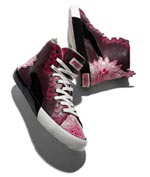 On
the international tennis courts, PUMA caused a stir in 2002, when the company
dressed the top player Serena Williams in a skin-tight black
“catsuit” at the US Open in New York and changed the fashion in a
sport that had seen players traditionally dress in white. In 1998, PUMA took
the then 16-year old American tennis player under contract and went together
with her all the way from rank 42 to number one in the world tennis ranking
list. On
the international tennis courts, PUMA caused a stir in 2002, when the company
dressed the top player Serena Williams in a skin-tight black
“catsuit” at the US Open in New York and changed the fashion in a
sport that had seen players traditionally dress in white. In 1998, PUMA took
the then 16-year old American tennis player under contract and went together
with her all the way from rank 42 to number one in the world tennis ranking
list.
|














